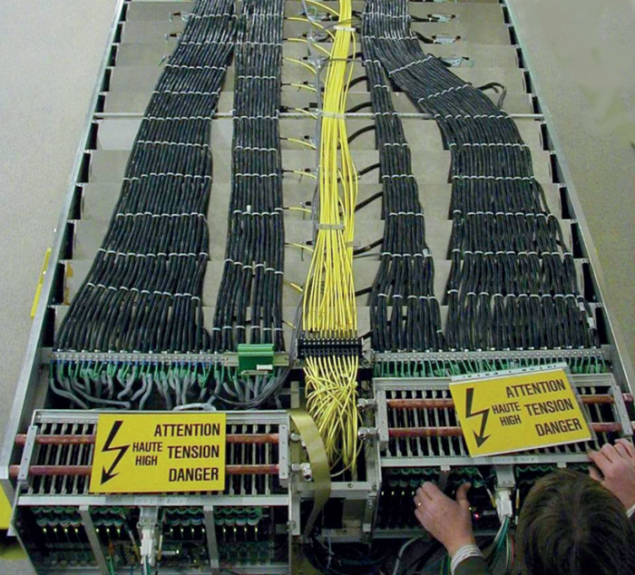
When quarks and gluons (partons) in opposing beams at high-energy hadron colliders meet they can scatter violently to produce correlated showers of particles, or “jets”. In proton–proton (pp) collisions, the rate of such events can be predicted using state-of-the-art QCD calculations and compared with the measurements. However, in heavy-ion collisions, jets are expected to be modified by the interaction of the scattered partons with the surrounding excited nuclear matter – the quark–gluon plasma, or QGP. Jets and this phenomenon of “jet quenching” thus provide important diagnostic probes of the QGP.

Image credit: T Awes.
ALICE, which is devoted to a broad study of the QGP at the LHC, first observed jet quenching in lead–lead (PbPb) collisions through the suppressed production rate of high-momentum single hadrons (CERN Courier June 2011 p17). Fully reconstructed jets are measured using the high-precision tracking of charged particles in the ALICE central barrel, together with a measurement of the energy of neutral particles in the EMCal (figure 1). The EMCal is a lead–scintillator sampling calorimeter covering |η| < 0.7 and 100° in azimuth, which consists of 11,520 separate towers, each subtending Δη × Δφ = 0.014 × 0.014. A late addition, its installation was completed in January 2011.
This “tracking+EMCal” method of reconstructing jets differs from the more traditional approach with hadronic plus electromagnetic calorimetry and provides a systematically different way to study jets. The first step for ALICE in the study of fully reconstructed jets in heavy-ion collisions is nevertheless to measure jets in the simpler environment of pp collisions, to determine the expected production rate for jets.

In March 2011, the LHC delivered a three-day run with pp collisions at √s =2.76 TeV to provide the reference measurements for PbPb collisions at the same centre-of-mass energy. During this brief run, the recently commissioned EMCal was employed as a fast trigger for jets, allowing ALICE to accumulate an integrated luminosity of 13.6 nb–1. Jet reconstruction was then carried out using two resolution parameters, R = 0.2 and 0.4, which define the maximum distance in phase space over which particles are clustered. An overall systematic uncertainty of 18–20% was achieved for the jet cross-section in the 20–125 GeV/c momentum range of the measurement.
Figure 2 shows the ratio of the inclusive differential jet cross-sections for R = 0.2 and R = 0.4, together with the predictions from QCD. This cross-section ratio is sensitive to the distribution of energy within jets and is of particular interest in the study of jets in heavy-ion collisions. The theoretical calculation agrees with the measured ratio if “hadronization” effects, which arise because the experiment measured hadrons and not partons, are taken fully into account.
These results demonstrate that ALICE can measure jets well with the advantage of precise determination of the jet structure, which is of crucial importance for studies of jet modification in PbPb collisions.







